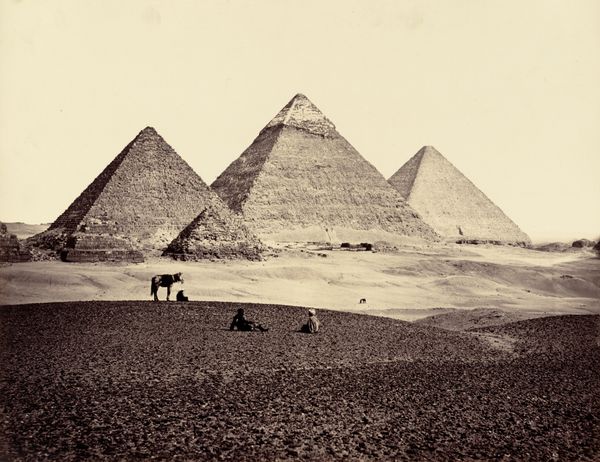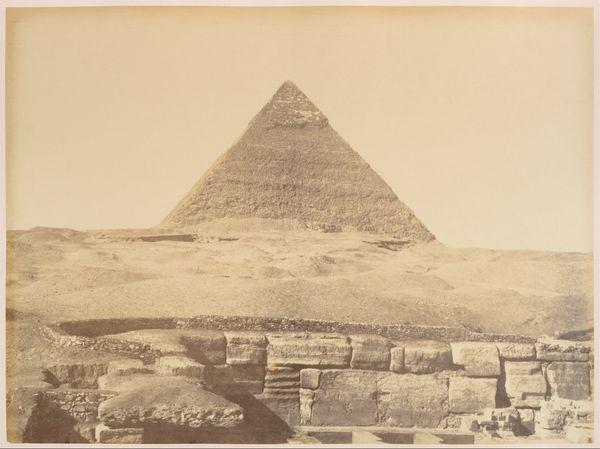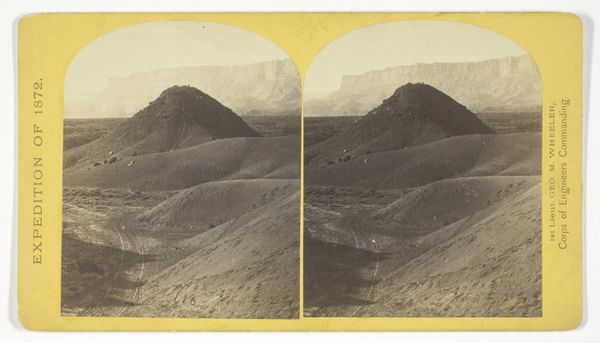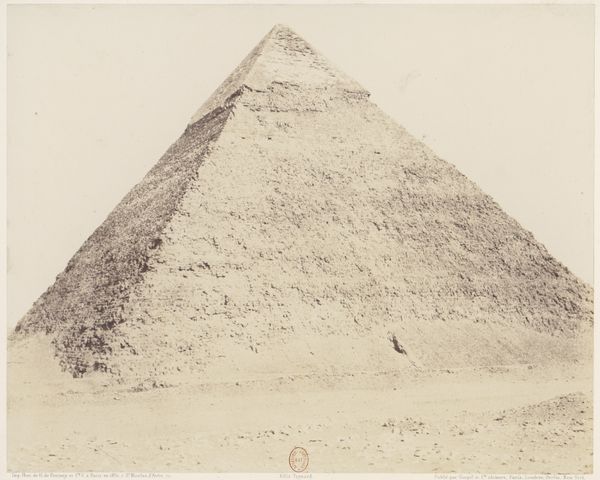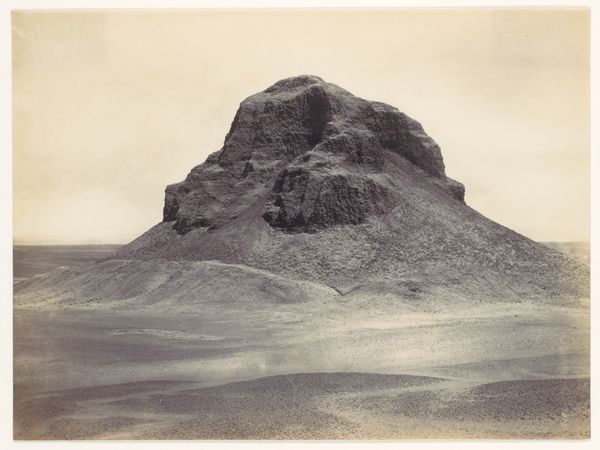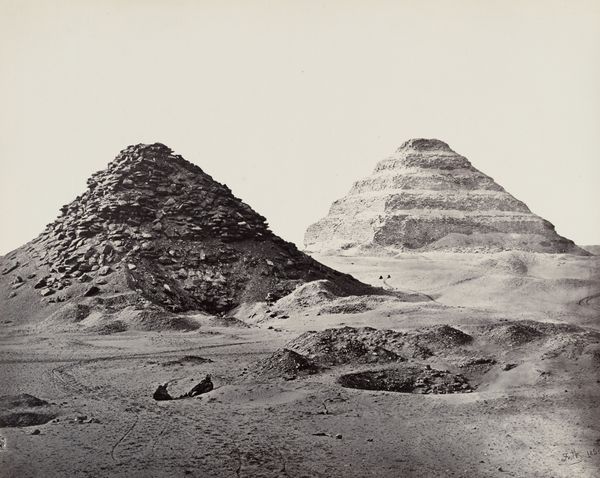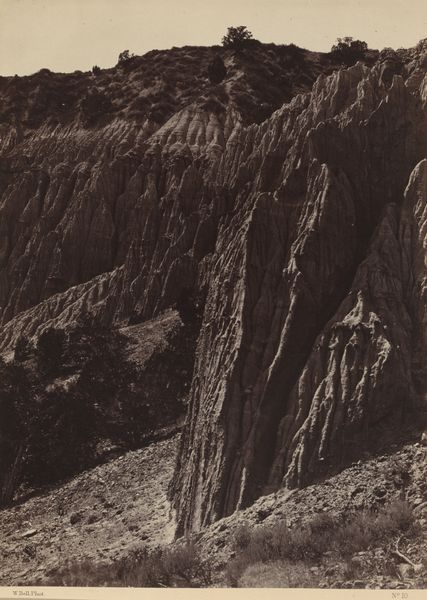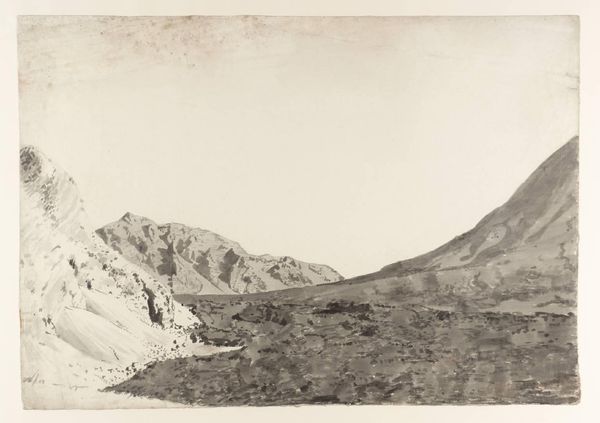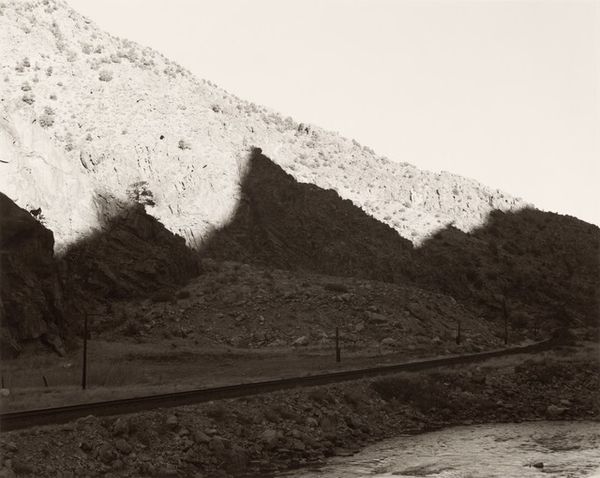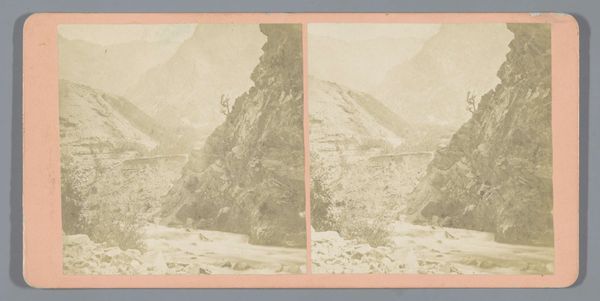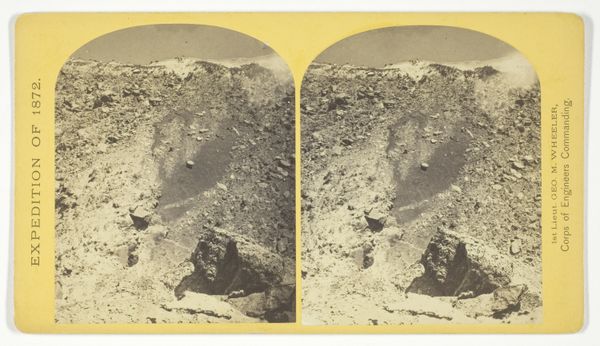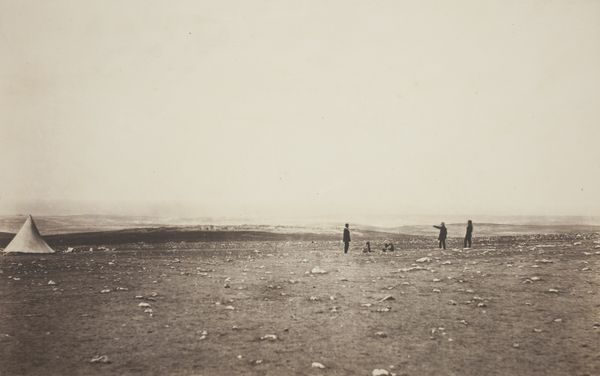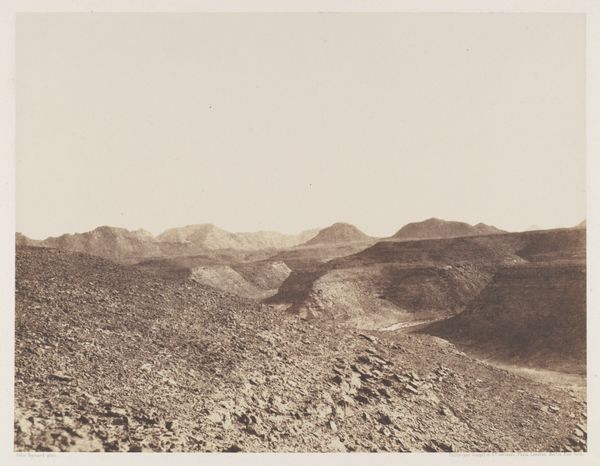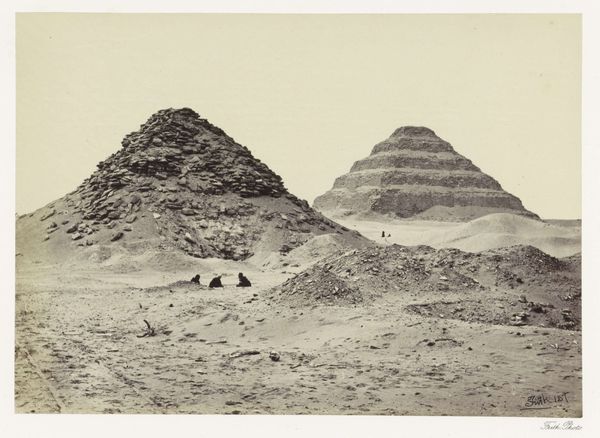
photography, gelatin-silver-print
#
landscape
#
ancient-egyptian-art
#
photography
#
ancient-mediterranean
#
gelatin-silver-print
Dimensions: image: 21.8 × 30 cm (8 9/16 × 11 13/16 in.) mount: 46.7 × 60.2 cm (18 3/8 × 23 11/16 in.)
Copyright: National Gallery of Art: CC0 1.0
This photograph of the Pyramid of Cheops was taken in Egypt by John Beasley Greene. The image was created using the collodion process, a technique which renders incredible detail. Greene was an archaeologist and photographer who documented ancient sites. His work provides a fascinating glimpse into the intersection of art, science, and exploration. Think about the labor involved, from quarrying the massive blocks, to hauling them into place. The pyramid embodies an intense concentration of human energy. Consider also Greene’s labor, trekking across continents and using relatively cumbersome photographic equipment. The final print is sepia-toned, owing to the chemical process used. What do you think about when you look at this image? Is it the extraordinary skill involved in building the pyramids? Or perhaps the contrast between this ancient monument and the new technology used to record it? Photographs like these remind us that every image is the result of human effort and ingenuity.
Comments
No comments
Be the first to comment and join the conversation on the ultimate creative platform.
